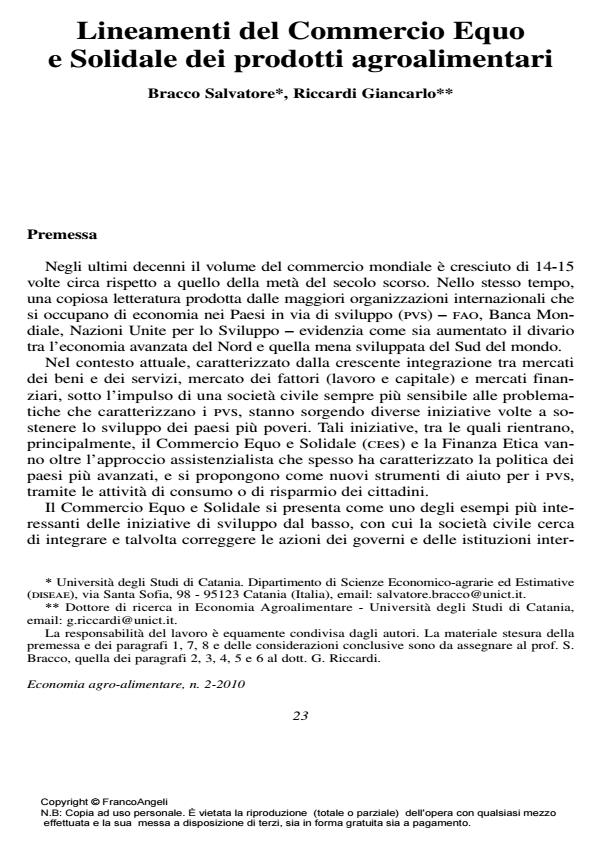Lineamenti del Commercio Equo e Solidale dei prodotti agroalimentari
Titolo Rivista ECONOMIA AGRO-ALIMENTARE
Autori/Curatori Salvatore Bracco, Giancarlo Riccardi
Anno di pubblicazione 2011 Fascicolo 2010/2
Lingua Italiano Numero pagine 19 P. 23-41 Dimensione file 412 KB
DOI 10.3280/ECAG2010-002003
Il DOI è il codice a barre della proprietà intellettuale: per saperne di più
clicca qui
Qui sotto puoi vedere in anteprima la prima pagina di questo articolo.
Se questo articolo ti interessa, lo puoi acquistare (e scaricare in formato pdf) seguendo le facili indicazioni per acquistare il download credit. Acquista Download Credits per scaricare questo Articolo in formato PDF

FrancoAngeli è membro della Publishers International Linking Association, Inc (PILA)associazione indipendente e non profit per facilitare (attraverso i servizi tecnologici implementati da CrossRef.org) l’accesso degli studiosi ai contenuti digitali nelle pubblicazioni professionali e scientifiche
International trade has increased, in the last few decades, however the economic divide between the advanced economies in the North of the world and the less developed of the South has increased. In the current state of affairs, characterised by the increasing integration between the commodities and service sector, capital and labour sector and the financial markets, diverse initiatives are arising in developed countries, aimed at supporting developing countries, under the impulse from a civic society increasingly concerned about the problems that trouble them. These initiatives, which most importantly include the Fairtrade and the Ethical Finance movements, excel the welfarism that has shaped the policies of the developed countries, and promote ways of aiding developing countries through consumption and savings made by the individual citizens. The Fairtrade represents one of the most interesting examples of initiatives from the bottom up, in which civic society tries to integrate (and sometimes correct) the actions of governments and international institutions, through direct trade between the producers in developing countries and consumers in industrialised countries. This article aims at, first of all, highlighting the anomalies that characterise the international trade of the agroindustrial goods that are at the centre of distortions of the agricultural commodities sector. For this aim, the alternative approach to the international trade of food commodities is analysed, and, therefore, the purpose of the Fairtrade in respect to the principals, criteria and objectives that characterise it. All the components of the agroindustrial chain of the Fairtrade are examined: the organisations of the producers, importers, retailers and the international coordination. Object of this analysis are also the provisions at European, National and Regional level. Finally, some relevant aspects of the conventional coffee and cacao trade are highlighted, making a comparison with the correspondent quantity and products in the Fairtrade market. The methodology will take into account relevant literature and will be based on the analysis of statistical data on the economic performance of the Fairtrade model, in terms of sales volumes and turnover. The analysis of the mechanisms and activities allows to delineate the current state of the fairtrade and highlights limits and prospects of this type of market.
Parole chiave:Fairtrade, commodities, agroindustrial chain, international trade
Jel codes:F12
Salvatore Bracco, Giancarlo Riccardi, Lineamenti del Commercio Equo e Solidale dei prodotti agroalimentari in "ECONOMIA AGRO-ALIMENTARE" 2/2010, pp 23-41, DOI: 10.3280/ECAG2010-002003